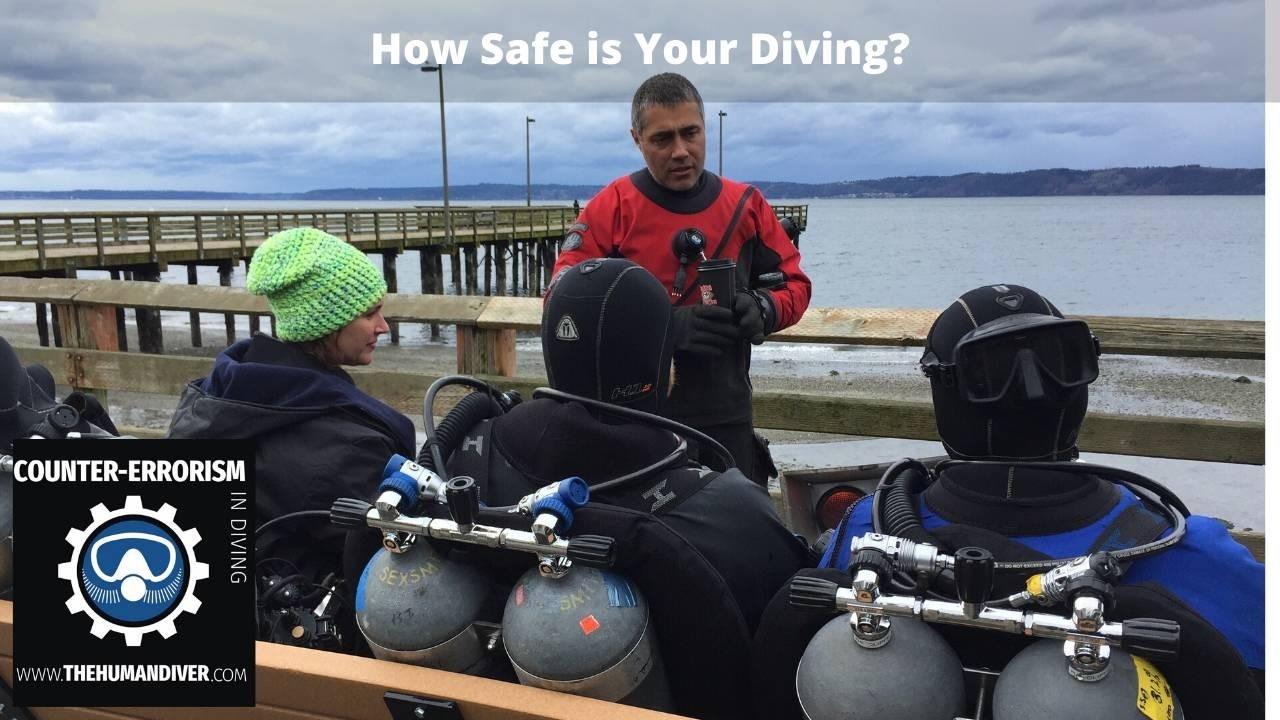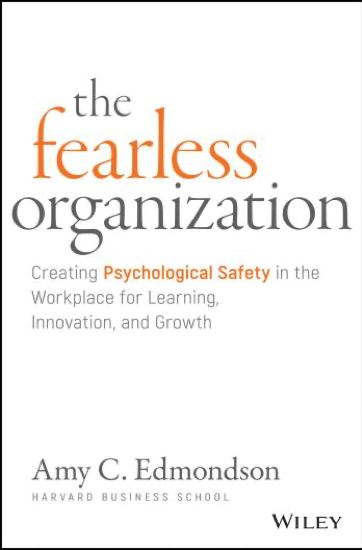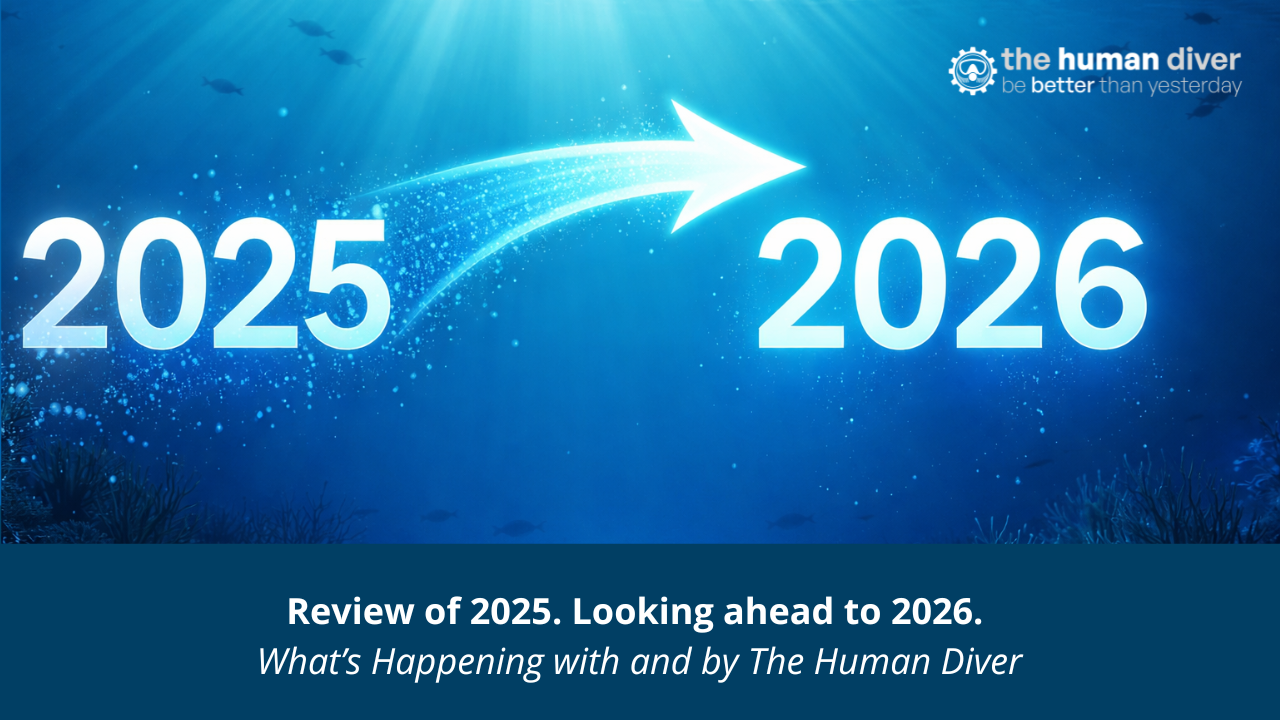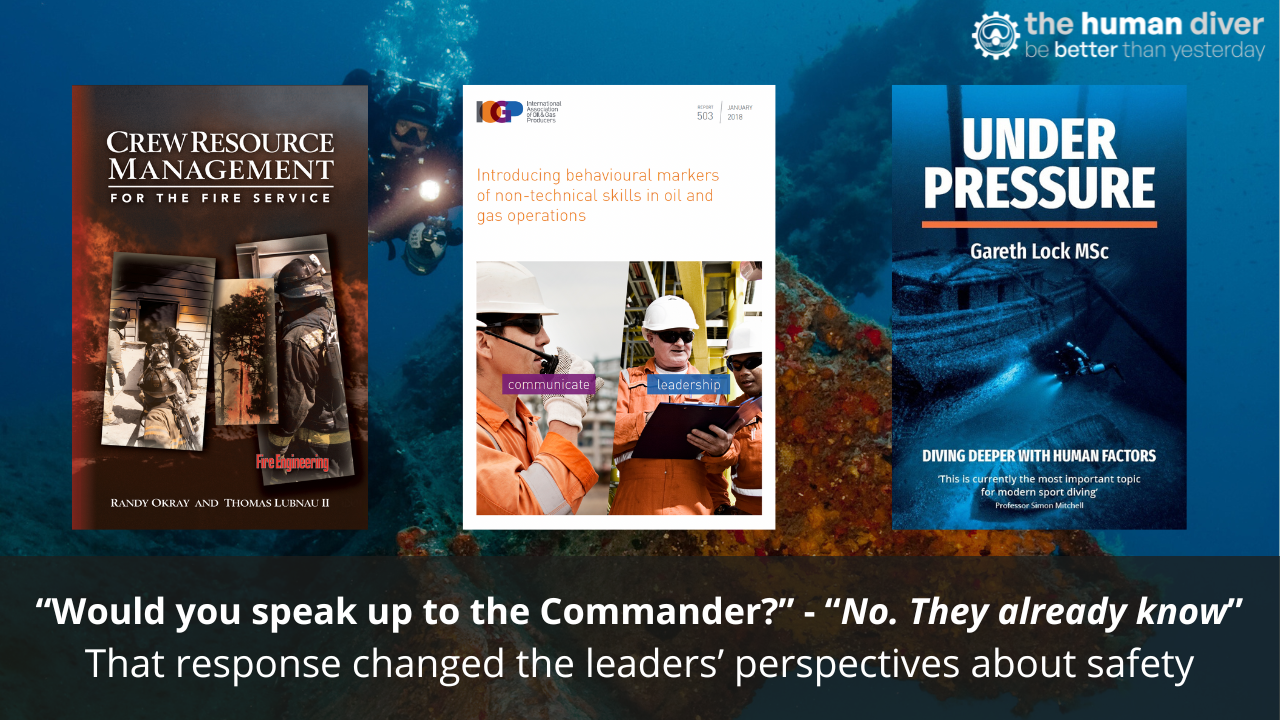
How safe is your diving?
Mar 06, 2020What does safe mean to you? The dictionary defines safe as “protected from or not exposed to danger or risk; not likely to be harmed or lost” and in the context of diving, we often think about the physical risks. These can include decompression sickness, animal-induced injuries, separated from the team/boat, entanglement, lost within a cave system or running out of gas. These are all credible negative outcomes which we should be concerned about. In fact, a number of these appear in the 2008 research paper from DAN (Common causes of open-circuit recreational diving fatalities) which examined triggers, disabling event/injuries and causes of death in diving, and so they should be definitely considered as part of our risk management plans and diving plans.

But what about another form of safety? A form which Google under project Aristotle identified as the key trait of high-performing teams and without which nothing else really mattered. A form which Professor Amy Edmondson has written numerous books and Harvard Business Review papers highlighting that it is this which allows unfamiliar teams to come together and operate effectively. A form which, when missing, has led to the failure of organisations and business such as Kodak, Blockbuster and Radio Shack? And yet this is also a form which is equally relevant to recreational, technical, scientific and military diving because it involves the interaction of individuals in a social environment. Note, that this isn’t just a ‘team diving’ thing, but is especially relevant to instructors and students, instructor candidates and instructor trainers, and even instructor peers within an organisation.
This safety is psychological safety and it is rarely if at all, covered in diver training. It is not the same as trust nor is it the same as a Just Culture (see the end for more on this). Yet the presence or absence can be the difference, literally, between life and death.

Team psychological safety is defined as a shared belief that the team is safe for interpersonal risk-taking – in essence, will I be made to feel stupid, ashamed, criticised or put down for asking a question or making a statement? In the majority of cases, this belief tends to be tacit i.e. it is taken for granted and not given direct attention either by individuals or by the team. Importantly, although tacit beliefs about interpersonal norms, or culture, are sometimes explicitly (openly) discussed in a team, bringing the teams attention to them i.e. making them explicit does not alter the essence of team psychological safety. When psychological safety is high, people take more ownership and release more discretionary effort to the task at hand (how much effort people have to apply compared to what they will apply).
In his recently published book, Four Stages of Psychological Safety, Dr Timothy Clark identifies that psychological safety is a condition in which you feel (1) included, (2) safe to learn, (3) safe to contribute, and (4) safe to challenge. His book charts how we move through these four stages. A summary of those stages and their relevance to diving is below.
- Stage 1 is the informal admittance into the team or group. We need to be accepted before we can be heard. Note, that in many cases, being ignored is worse than being rejected and when we can’t get acceptance or approval from others, attention is sought by other means, sometimes destructive. The relevance to diving is that diving is very tribal and if you are wearing the wrong ‘badge’ (agency, equipment, style) then you will struggle to be accepted unless someone can provide psychological safety. Instructors need to be aware of this when dealing with students from other ‘tribes’ not to make throw-away and derogatory comments about other ‘tribes’.
- Stage 2 is learner safety and where we feel able to undertake discovery by asking questions, experimenting (socially and technically) and even making mistakes. Without learner safety, the individual remains passive. When we harshly correct or criticise others for their learning (and their associated mistakes), then learner safety is crushed. By increasing learner safety, we can build confidence, resilience and independence. By developing learner safety, it is possible to supplement the individual’s lack of confidence with the team’s confidence. In the context of diving, one of the challenges here is the ‘gifted’ instructor who forgets what it is like to be a beginner and not know things, rushing through the training to meet a timed deadline. On the contrary, letting the student develop and allowing them to fail safely, will allow the student to release more discretionary effort and achieve more.

- Stage 3 is contributor safety and this comes about after the individual has demonstrated the competency to the team or organisation – this might be via physical demonstration, qualifications or credentials. The individual is then given ‘permission’ to contribute without necessarily being asked. However, despite having credentials, the individual might not be allowed to contribute because of insecurities of the leader, personal or institutional biases, team norms or a lack of empathy. In the context of diving, this could be where students are on a class but are unable to contribute to the discussion relating to a potentially better way of doing something, or when instructors are contributing to agency materials and they are put down by the ‘lead’ individual. This means that team or organisational learning is reduced or pushed back.
- Stage 4 is challenger safety – this is where it is possible to challenge the status quo without retribution, reprisal or the risk of damaging their own personal reputation or credibility. This gives the individual the confidence to speak up when something needs to be said. There are numerous tragic examples of this in diving, but one I am intimately involved with concerns the death of Brian Bugge in May 2018 where one of those on the boat, a fellow training course member, internally considered the situation just before Brian got off the boat with his O2 turned off on his CCR (unknown to both Brian and the course-mate), saying to themselves that they should call this dive and that it wasn’t right to be doing this it this way. However, there was no challenger safety present and the dive carried on with Brian dying very shortly after getting into the water due to hypoxia.
To me, the most important level of psychological safety in diving is the last one, challenger safety, because this is often the last opportunity to raise a concern before something bad happens. There is an often-quoted term “Anyone can thumb a dive at any time for any reason, no questions.” but in reality, this isn’t always the case. Stages 1, 2 and 3 may be present, but without Stage 4, then the thumb is unlikely to go up, even when there is a realisation that things are going wrong. At the beginner level, the diver is unlikely to be in Stage 3 let alone 4! For a start, they don’t know what they don’t know so how can they contribute?

To me, this is why effective teamwork is really important in diving. Not because the technical tasks that can be achieved as part of a team can exceed those of solo divers or ‘buddy divers’/’same ocean divers’ but because when you are part of a high-performing team, the level of psychological safety is high and then it is possible to challenge when you need to. It also identifies why effective leadership in diver training is needed!
A level of teamwork needs to be developed by instructors within recreational and instructor development classes too because instructors drift, they make mistakes and we need to create the environment whereby students or peers can halt or slow this drift. They do this by providing feedback in a non-critical manner, separating the observed activity or event from the person. If the only feedback you get as an organisation is something major going wrong being reported by the quality control (QC) forms, then the organisation is not being proactive in managing the risks.
Challenger safety isn’t just about managing (safety) risks but it also applies to innovation and development too. If we want new ideas to come to the fore regarding instructional techniques, safety concepts, equipment design or environmental practices, we need to support challenger safety. “When there is no tolerance for candour, there is no constructive dissent. When there is no constructive dissent, there is no innovation” – Dr Timothy Clarke
Note, that you normally only get one chance to support challenger safety. If someone challenges the status quo and they get negatively criticised or put down, they are unlikely to speak up again and this could mean both safety is compromised and innovation reduced. That is unless they have nothing to lose and have a passion for making that improvement! However, at some point, they will give up and walk away…

So, how can you start to develop psychological safety within your team, with your students or with your peers? Get and give feedback. Three simple questions you can use:
- One thing I do well, why?
- One thing I need to do more of and why?
- One thing I need to do less of and why?
Use observable behaviours and comment on the impact it has on you. Be specific, don’t be general. You can download a guide to more on this from here https://www.thehumandiver.com/debrief
If you want to learn more about this topic, have a look at these external links:
- Psychological Safety and Learning Behavior in Work Teams. Amy Edmondson. Administrative Science Quarterly, Vol. 44, No. 2 (Jun., 1999), pp. 350-383
- https://liberationist.org/high-performing-teams-need-psychological-safety/
- What Psychological Safety is Not. Amy Edmondson. https://qz.com/work/1470164/what-is-psychological-safety/
---------------------------------
Notes:
- Trust is primarily a 1:1 relationship, for example you trust me to do something you have asked me to do, and I trust you to give me something I can do, or I trust you to keep a secret.
- Psychological safety is a 1:many and many:1 relationship.
- A Just Culture is the recognition that we are all fallible, irrespective of experience and knowledge, and that context should be taken into account when judging the errors or violations which have been made, but at the same time, those who commit sabotage, wilful negligence or violations for personal gain, should be punished accordingly.

Gareth Lock is the owner of The Human Diver, a niche company focused on educating and developing divers, instructors and related teams to be high-performing. If you'd like to deepen your diving experience, consider taking the online introduction course which will change your attitude towards diving because safety is your perception, visit the website.
Want to learn more about this article or have questions? Contact us.










